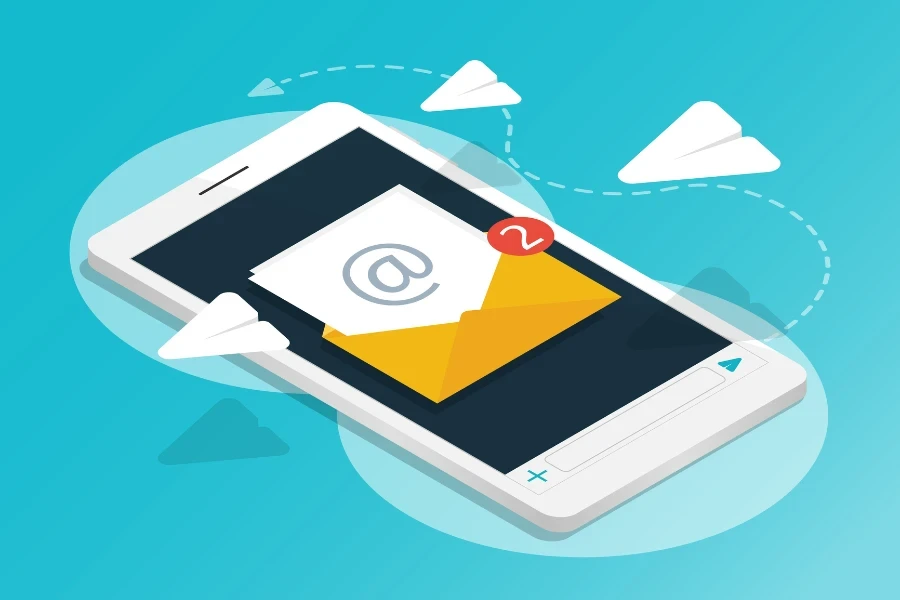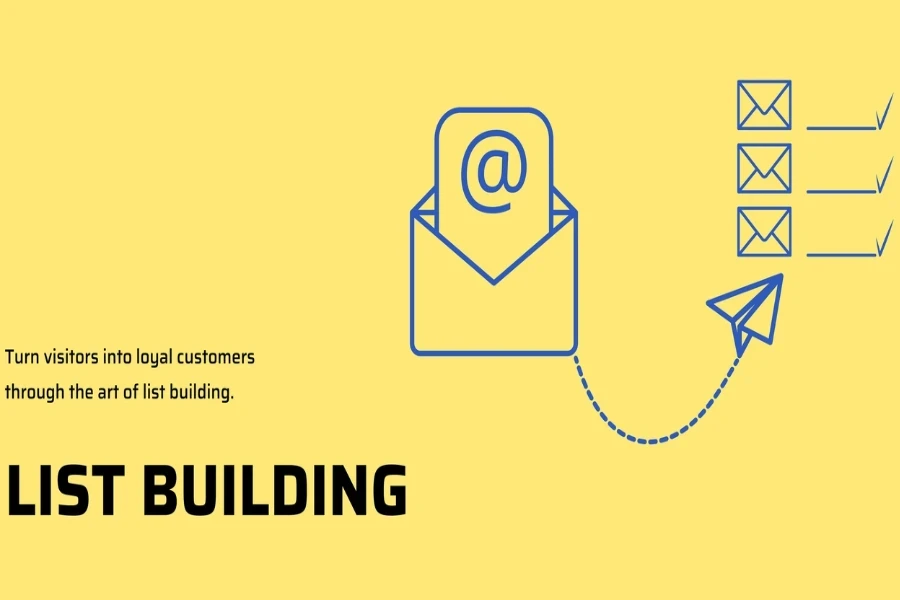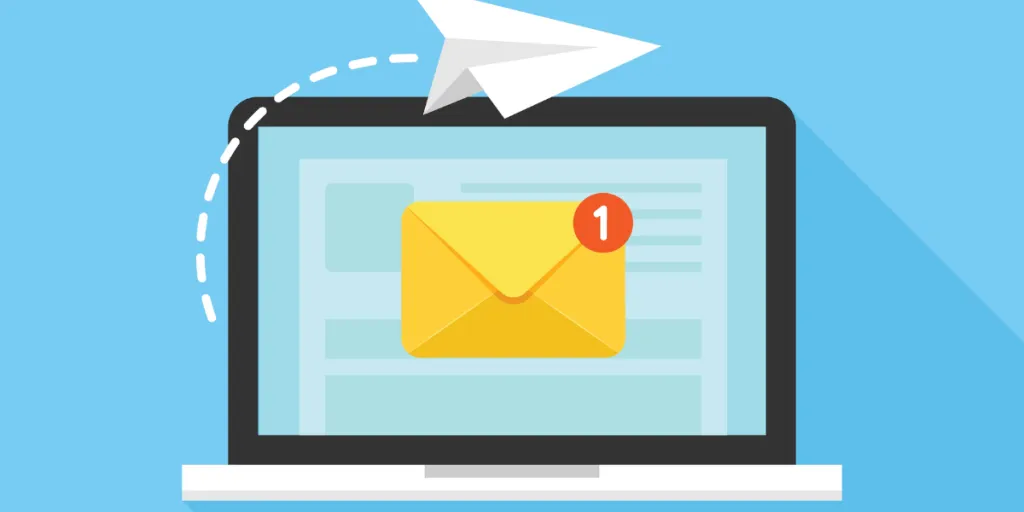Email marketing is a digital marketing strategy that involves sending emails to a group of people to promote products and services or build relationships with customers. It’s a direct and cost-effective way for businesses to communicate with their audience. Email automation uses technology to streamline the process, so emails get sent to customers and potential customers automatically.
Here, we will discuss email automation and how it benefits your business, while also providing critical strategies for getting started using email automation as a part of your email marketing campaigns.
Table of Contents
What is email automation?
Benefits of email automation
How does email automation work?
Getting started with email automation
Final thoughts
What is email automation?

Email automation is the process of using technology to streamline and automate the sending of emails based on predefined triggers, actions, or conditions. It involves setting up a series of predetermined emails to be sent to a specific audience at specific times or in response to specific actions.
The goal is to deliver timely and relevant content to subscribers without manual intervention, thereby saving time and increasing efficiency.
Email automation is often a crucial component of an overall email marketing strategy.
Benefits of email automation
Email automation offers several benefits in the context of email marketing. Here are some of the key advantages:
- Time efficiency: Email automation reduces the need for manual intervention in sending emails, saving marketers a significant amount of time. Once the automation workflows are set up, emails can be sent automatically based on triggers or schedules.
- Consistency: Automated emails ensure consistency in communication. Whether it’s a welcome email for new subscribers or a series of follow-up messages, automation ensures that each subscriber receives the same sequence of emails, providing a standardized experience.
- Personalization: Automation allows for greater personalization by enabling marketers to send targeted messages based on user behavior, preferences, or demographics. This personalized approach can significantly improve engagement and conversion rates.
- Segmentation and targeting: Email automation platforms often include segmentation tools that allow marketers to divide their audience into specific groups based on various criteria. This segmentation enables more targeted and relevant messaging, increasing the effectiveness of email campaigns.
- Lead nurturing: Automated drip campaigns are effective for lead nurturing. By sending a series of relevant and timely emails to leads over time, marketers can guide them through the sales funnel, providing valuable information and building trust until they are ready to make a purchase.
- Increased engagement: Automation allows marketers to send emails at optimal times, increasing the likelihood of subscriber engagement. Behavioral triggers and personalized content contribute to higher open and click-through rates.
- Improved conversion rates: With targeted and timely messaging, email automation can contribute to higher conversion rates. Whether encouraging a purchase, promoting an offer, or re-engaging inactive subscribers, automation helps deliver the right message at the right time.
- Cost-effective: While there may be initial setup costs for implementing email automation, it is generally a cost-effective marketing strategy in the long run. The time and resources saved through automation can outweigh the investment, especially for businesses with large and growing email lists.
- Responsive to customer behavior: Automation allows marketers to respond promptly to customer actions. For example, sending a thank-you email after a purchase or a reminder for abandoned shopping carts can be automated, showing customers that their actions are acknowledged.
How does email automation work?
Email automation uses predefined triggers, conditions, and actions to automatically send emails based on specific events or criteria.

Some common email automation triggers are:
- Welcome: Activated when a new subscriber joins your email list. Welcome emails are often the first in a series designed to introduce the subscriber to your brand and encourage engagement.
- Confirmation: Sent when a user completes a specific action, such as confirming their email address after signing up or completing a registration process.
- Abandoned cart: Activated when a user adds products to their shopping cart but leaves the website without completing the purchase. Abandoned cart emails aim to encourage users to return and finalize their transaction.
- Purchase: Sent after a customer completes a purchase. These emails can include order confirmations, shipping updates, and post-purchase recommendations.
- Behavioral: Based on specific user behaviors, such as clicking on a particular link, visiting a specific page on your website, or engaging with previous emails. Behavioral triggers help tailor the content of subsequent emails to the user’s interests.
Getting started with email automation
Getting started with email automation doesn’t have to be challenging. Here are the simple steps to get started with your first email automation:
1. Define your goals
Clearly outline the objectives of your email automation. Whether it’s increasing sales, nurturing leads, improving customer retention, or any other goal, having a clear purpose will guide your strategy.
2. Choose an email automation platform
Select an email automation platform that suits your needs and budget. Popular options include Mailchimp, HubSpot, ActiveCampaign, and others. Here are the 10 best email marketing platforms.
Consider factors like ease of use, features, scalability, and integration capabilities when choosing the best platform for your team.
3. Build your email list

Ensure that you have a clean and opted-in email list. Segment your subscribers based on relevant criteria, such as demographics or behaviors, to personalize your automated campaigns.
Learn more about customer segmentation.
4. Create valuable content
Develop the content for your automated emails; this includes welcome emails, product recommendations, educational content, and other messages relevant to your audience. Ensure that your content aligns with your goals and provides value to your subscribers.
5. Identify automation triggers
Determine the events or actions that will trigger your automated emails. Common triggers include sign-ups, purchases, abandoned carts, and specific user behaviors. Define the conditions that will initiate each automated email.
6. Design workflows
Map out the workflows for your email automation sequences. Define the logic and timing of each email in the sequence. Consider factors such as delays between emails, conditional branches based on user behavior, and the overall flow of communication.
7. Test your automation
Before activating your automated campaigns, thoroughly test each workflow to identify and fix any issues. Check the content, timing, and triggers to ensure a seamless user experience.
8. Monitor and analyze
Once your automation is active, you should regularly monitor its performance using the analytics provided by your chosen email automation platform. Keep a close eye on key metrics like open rates, click-through rates, and conversion rates to gauge the effectiveness of your campaigns.
As you analyze the results, use these insights to optimize your email automation strategy; this involves refining triggers, adjusting content, and tweaking workflows based on the performance data.
Continuous iteration is crucial for improving the overall effectiveness of your campaigns over time.
Final thoughts
Email automation stands as a powerful tool that transforms email marketing strategies. By streamlining the process of delivering targeted and personalized messages to your audience, email automation not only saves valuable time but also enhances the efficiency and effectiveness of your campaigns.
Remember, successful email automation is not a one-time effort but an ongoing process of refinement and adaptation. By staying attuned to the needs and preferences of your subscribers and leveraging the insights gained through analytics, you can continually optimize your email automation strategy and drive meaningful results for your business.
As we move forward in the digital age, embracing the capabilities of email automation is not just a choice; it’s a strategic imperative for businesses aiming to thrive in the dynamic landscape of online communication.




